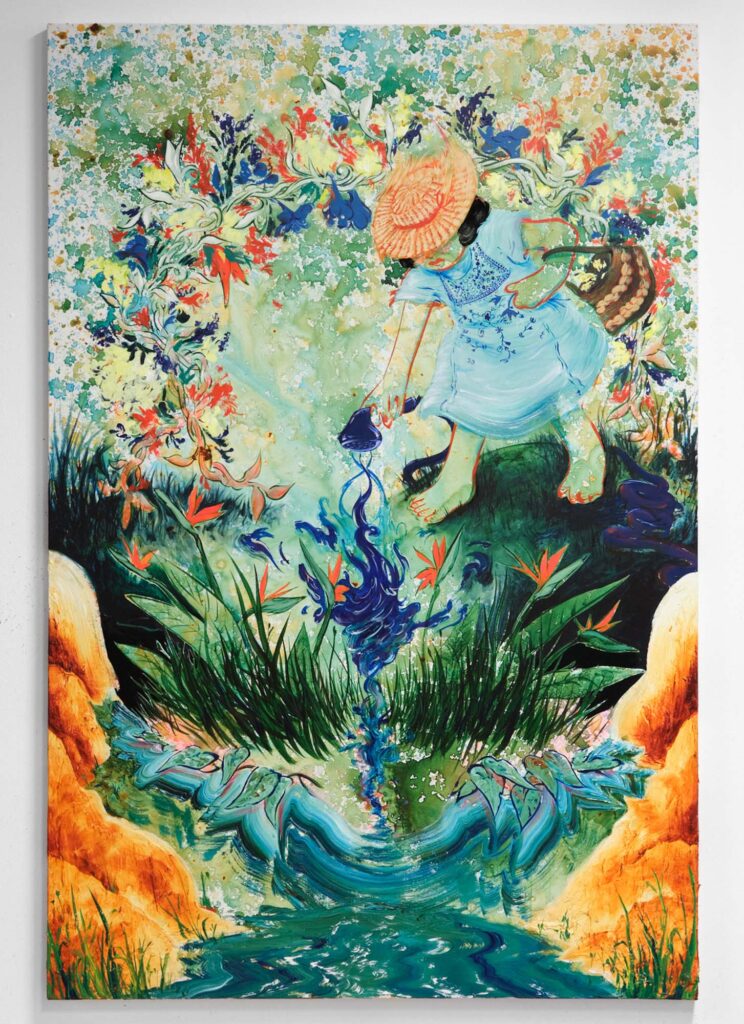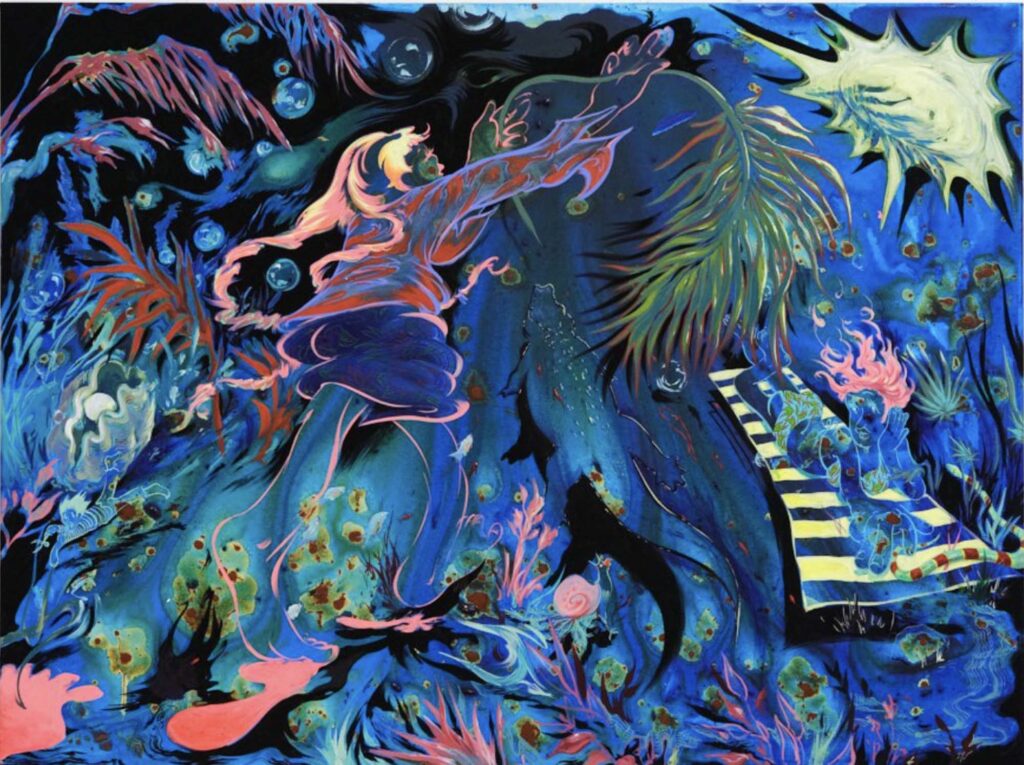
MIAMI, FL – KDR Gallery is pleased to present The Best Show During Art Basel, a solo exhibition by Susan Kim Alvarez. The exhibition opens on November 30 and remains on view
through January 10, 2026.
Alvarez’s paintings explore the intricate overlaps of culture, humor, and memory in everyday life. Drawing from her Cuban, Vietnamese, and Jewish heritage, the artist navigates the space
where celebration and contradiction coexist, creating work that holds multiple voices at once:
the ornamental, the sacred, the ridiculous, and the tender.
This new body of work positions Florida as a site of living folklore, where myth and daily routine blend in the subtropical heat. Bars, parties, and street scenes become stages for storytelling—small rituals of connection that reveal how time, community, and belief shape one another. With a compositional density that echoes Bruegel’s teeming village scenes, Alvarez captures the simultaneous chaos and order of communal life, where every corner holds its own narrative. The exhibition’s centerpiece, “Mouth of Miami,” explores the passage of time through evolving ideas of sin, reflecting on how everyday acts of pleasure and self-expression have, over the centuries, been regarded as moral thresholds.
Several works serve as tributes to Alvarez’s family, depicting her relatives as she imagines them younger, in moments that feel both remembered and invented. Set in places that represent who they were and how she has come to understand them, these imagined reconstructions transform painting into a way to honor the past while bending it into something new—a space where the factual and the fantastical coexist.
“I view these paintings as storytellers themselves,” Alvarez states. “Each piece repeats, distorts,
and exaggerates until memory transforms into myth, blurring the line between reverence and
satire, guilt and joy, into something more human.”
Susan Kim Alvarez (b. 2000, Honolulu, HI) earned a degree in Interdisciplinary Sculpture from the Maryland Institute College of Art in 2022. In 2023, she attended the Skowhegan School of Painting and Sculpture in Skowhegan, ME. Her selected solo exhibitions include the Mount Royal Mansion Exhibit, curated by Abigail DeVille, in Baltimore, MD (2020); “Oogly Boogly” at the NSU Art Museum in Fort Lauderdale, FL (2023); and “Squonk, Squonky, Squonkalicious” at the Storage Archive Gallery in New York City, NY (2024). She exhibited in group exhibitions at Latitude Gallery in NY, Chilli Projects in London, Nouveaux Deuxdeux in Munich (2025). She is currently a artist in residence at the Bakehouse Art Complex in Miami, FL. Her works are held in notable public and private collections, such as Marquez Art Projects, Miami, FL and the NSU Art Museum Fort Lauderdale, FL. She currently lives and works in Miami, FL.


